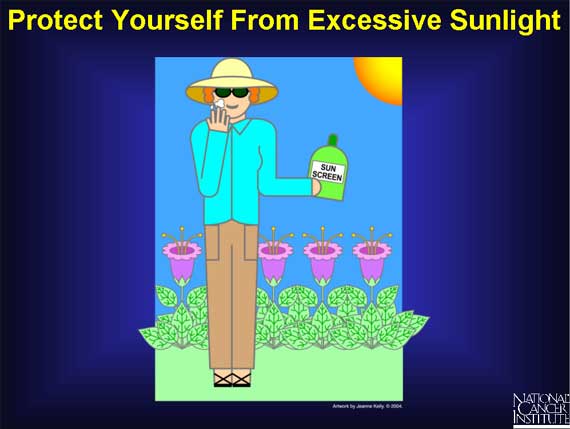Melanoma – what do we really need to know? Is it curable? Is it always caused by overexposure to the sun?

 Martha Grout, MD, reports that: “Melanoma is the most dangerous form of skin cancer. If recognized and treated early, it is nearly 100 percent curable. When not caught early, a melanoma spot the size of a dime can spread to other parts of the body where it becomes hard to treat.” Melanoma arises from a type of cell called melanocyte, present in the deep in the epidermis, the top layer of the skin.
Martha Grout, MD, reports that: “Melanoma is the most dangerous form of skin cancer. If recognized and treated early, it is nearly 100 percent curable. When not caught early, a melanoma spot the size of a dime can spread to other parts of the body where it becomes hard to treat.” Melanoma arises from a type of cell called melanocyte, present in the deep in the epidermis, the top layer of the skin.
Who is most vulnerable? Half of all cases of melanoma occur under the age of 57 – in men more than women. Risk factors include family history of melanoma, history of multiple sunburns, age, light hair color, total number of moles present on the body, and location of the melanoma itself.
What about indoor tanning? In 2009, the International Agency for Research on Cancer (IARC), part of the World Health Organization, reclassified tanning devices into the highest cancer risk category as “carcinogenic to humans.”
So, do we blame it all on the sun – the UVA and UVB rays?
Let’s consider the following:
- In 1900, about 75% of the U.S. population worked outdoors. Melanoma was rare. Since then, the incidence of melanoma has been steadily rising and sun exposure is decreasing. Vitamin D deficiencies are becoming epidemic.

- Melanoma is more common in indoor workers than outdoor workers.
- Diet plays a part. Dr. John Cannell of the Vitamin D Council:
“Diets rich in vegetables, fruits, and omega-3 fats –protects your skin from burning. The people who get sunburned live and work indoors, go to the beach (or pools) two or three times in the summer to roast themselves. Frequent sunburns, especially in childhood, are but one factor in melanoma – genetics and diet are more important.”
- Can it be the thinning ozone layer – more sun rays getting through? Research from the U CA – San Diego – reports that the thicker the ozone layer, the higher the rates of melanoma. Australia and New Zealand, for example, have a very thick ozone layer, and they have very high rates of melanoma. The atmospheric condition acts as a sunscreen, blocking the body’s ability to make vitamin D. No UVB reaching ground level means no protective vitamin D
- The UCSD researchers also make a compelling argument that when sunscreens use rose, the rates of melanoma and other cancers went up. The ability to tan is a highly protective factor, and sunscreens inhibit this natural protection. “One thing we do know – there are no studies showing that sunscreens prevent melanoma.”
How to protect ourselves? Eat a diet rich in vegetables, fruits, and omega-3 fats (fish oil) and avoid getting sunburned (stay in the shade).
 Arthur Rhodes, MD, MPH, Dermatologist, counsels avoiding sun exposure during peak intensity times, covering up with clothing, use high SPF sunscreen (pick a safe one; see article on Sunscreen on this site). “Sun protection during the first 15 years of life has been estimated to reduce the risk of epithelial skin cancer by 80%.
Arthur Rhodes, MD, MPH, Dermatologist, counsels avoiding sun exposure during peak intensity times, covering up with clothing, use high SPF sunscreen (pick a safe one; see article on Sunscreen on this site). “Sun protection during the first 15 years of life has been estimated to reduce the risk of epithelial skin cancer by 80%.
Maintain a good level of Vitamin D (cancer-protective). Ask your physician to test your level. You may need to supplement.





Recent Comments